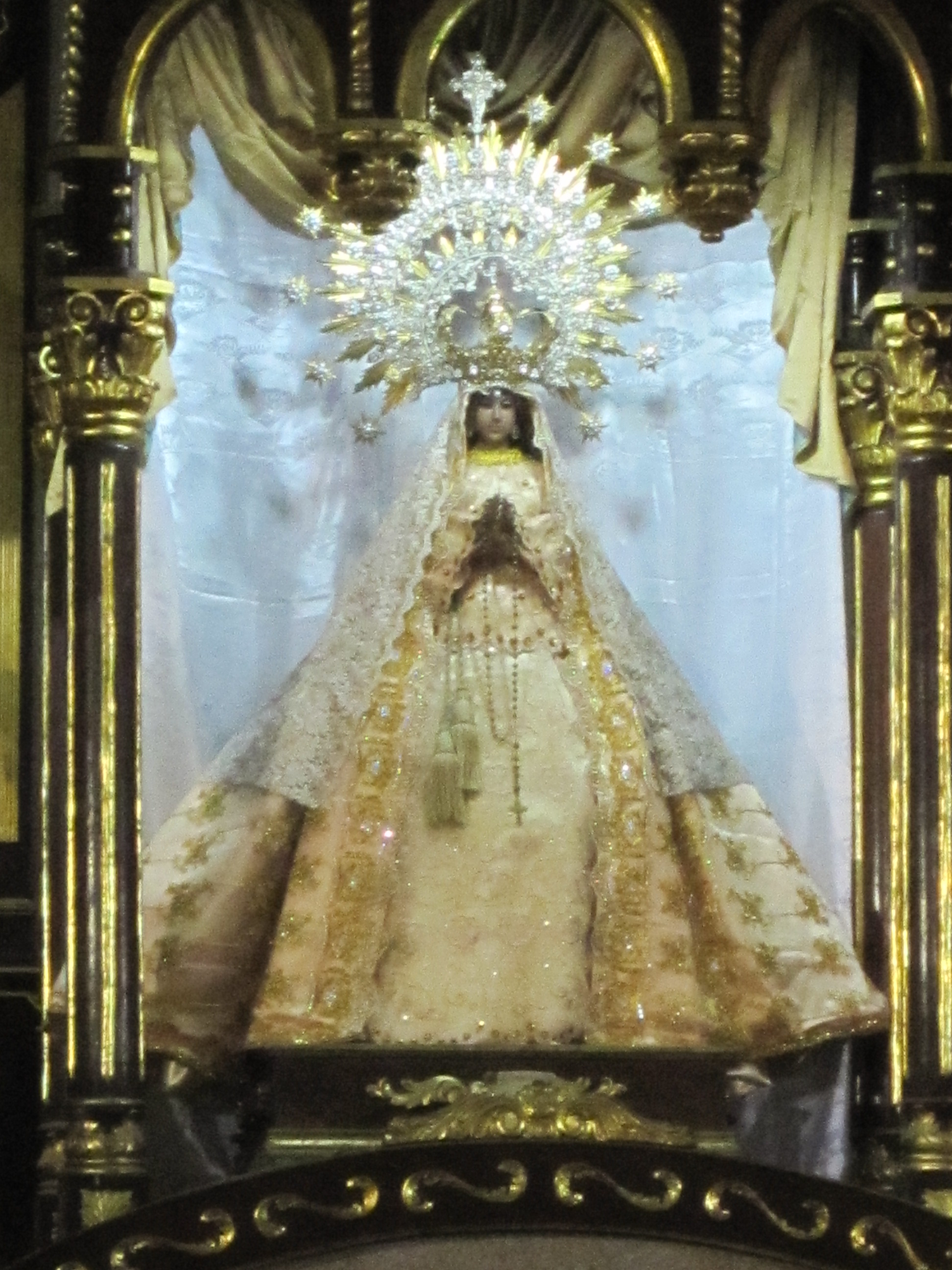|
Home Prologue St. Claire St. Paschal Salambao New Zest Dance Form Epilogue Links PDF version Guestbook Yamagata Credits: Author: R. delos Reyes HTML: E. de Guzman Photos: J. Lozano |

After a few years, the 19th of June, 1763, another patron saint was added in the church of Obando, completing the triumvirate of the blessed. Two fishermen, Juan and Julian de la Cruz, as they were fishing over the Huling Doong of Binoangan, Tambobong (presently known as Malabon City), unexpectedly caught the image of the Immaculate Conception in their fishnet. According to the legend, when they were trying to bring the image to Navotas, the fishnet became very heave and they could not move. But when they tried to move the boat towards the Obando area, the fishnet and the boat moved very easily. Since then, the image of the Blessed Virgin was enshrined in the church and was included among the patron saints of Obando. In the unexpected sequences of the events, the third patron saint, the Immaculate Conception, known as the Our Lady of Salambao, is also appropriate to be a patron saint for the childless. also, the sea, where most people are getting their living, is a symbol for the source of life. Aside from this, the inclusion of the Our Lady of Salambao in the triumvirate of the patron saints of Obando started the spread of practice of honoring the Blessed Mother in the town. In short, Obando became one of the towns that gave importance to the role of the Blessed Virgin in the wholeness of the Catholic faith. The Our Lady of Salambao, since then, also became the patron saint of the fishermen of Obando. In the past few years, the image of the Blessed Virgin has also been included in the annual "FEAST OF THE CROSS" that is being held in the river connecting the villages of San Pascual and Hulo every May. In this way, the Our Lady of Salambao has been given an appropriate celebration suitable to Her history and imagery. |